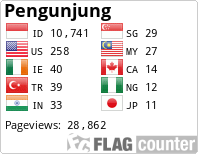Eksistensi Budaya Tea Bel (Pela Gandung) Dalam Kehidupan Suku Kei Di Kabupaten Maluku Tenggara
DOI:
https://doi.org/10.55606/jrik.v3i1.3369Keywords:
Cultural Existence, Tea Bel (Pela Gandung), Kei Tribe LifeAbstract
Culture is a national identity that must be respected and maintained and needs to be preserved so that culture is not lost and becomes a legacy for our children and grandchildren. Of course, this is the responsibility of the younger generation to preserve this culture. This is because culture is one of the identities of a country. As human civilization progresses today, the threat of globalization to the existence of the country's identity can be assessed from the increasing erosion of traditional culture among society, especially the younger generation.
Downloads
References
Amirrachman, A. 2007. Revitalisasi Kearifan Lokal: Studi Resolusi Konflik di Kalimantan Barat, Maluku & Poso. Jakarta: ICIPAponno,
E. H. (2017). Budaya Lokal Maluku “Pela Gandong” Dalam Konteks Perilaku Organisasi.Jurnal Manajemen STIE Muhammadiyah Palopo,3(1).Frost, N. (2014). Adat di Maluku: nilai baru atau eksklusivisme lama?.Antropologi Indonesia.
Hehanussa, J. M. (2009). Pela dan gandong: Sebuah model untuk kehidupan bersama dalam konteks pluralisme agama di Maluku.Gema Teologi,33(1).
Hoedodo, T. S., Surjo, J., & Qodir, Z. (2013). Local political conflict and pela gandong amidst the religious conflicts.Jurnal Studi Pemerintahan.
Mirzaqon, A., & Purwoko, B. (2018). Studi Kepustakaan Mengenai Landasan Teori Dan Praktik Konseling Expressive Writing Library.Jurnal BK Unesa,1, 1-8.
Riyanto, Armada. 2015. Kearifan Lokal Pancasila Butir-Butir Filsafat Keindonesiaan. Yogyakarta: KanisiusSugiyono. Metode Penelitian Kuantitatif, Kualitatif dan R&D. Bandung: Alfabeta
Downloads
Published
How to Cite
Issue
Section
License
Copyright (c) 2023 Jurnal Rumpun Ilmu Kesehatan

This work is licensed under a Creative Commons Attribution-NonCommercial-ShareAlike 4.0 International License.









